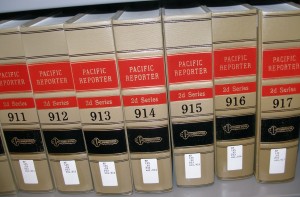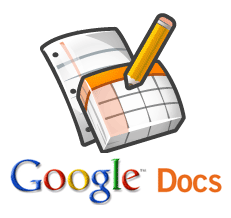
Each Thursday we present a significant excerpt, usually from a recently published book or journal article. In every case the proper permissions have been obtained. If you are a publisher who would like to participate in this feature, please let us know via the site's contact form.
Governing from the Bench: The Supreme Court of Canada and the Judicial Role
Emmett Macfarlane
Vancouver: UBC Press, 2012
(NB. As before, the UBC Press offers Slaw readers a discount on the price. The code is SLAW-20, and the offer will expire July 15, 2013)
(Excerpt selected by the author.)
In Governing from the Bench: The Supreme Court of Canada and the Judicial Role (UBC Press, 2013) I attempt to provide a comprehensive look inside the Supreme Court. The book explores each stage of the Court’s decision-making process, from selecting which cases to hear to the negotiation and compromise the justices engage in when writing their reasons. This short excerpt examines the role and influence the Court’s law clerks have on the writing process.
—
There is no uniform approach among the justices with regard to how they prepare drafts of written reasons. Some of the Court’s members will prepare a simple outline of the reasoning explored in conference. Others will go through the case materials and begin work on a substantial rough draft. Regardless of the starting point, most judgments go through several drafts before they are circulated to the rest of the Court, and are then subjected to even more revisions after that. Each justice also varies in the extent to which she relies on her law clerks, and even this can vary from case to case. One thing is especially clear: the law clerks’ involvement in the preparation of reasons is substantial, ranging from assisting in editing and additional research to writing full drafts of the reasons themselves. Typically, the clerk that prepares the bench memoranda for a particular case will be the clerk assigned to work on the judgment.
One justice suggests that the two primary aspects of the clerks’ relationship with the judge are professional and educational. The professional relationship ensures the justice understands all aspects of the case through the clerk’s research and assistance. In the educational aspect of the relationship, the judge tries to give the clerks as much exposure to the judicial process and all areas of the law during their year of service. With this view in mind, this justice allows the clerks to participate in all aspects of handling a case, including working on the drafting of the reasons. When assigned writing responsibilities for a case, the justice prepares an outline following the conference discussion for the clerk to follow when the clerk is working on the reasons.
Another justice follows every conference by writing a memo of a page or two in length, describing what was discussed, what the consensus was and why, and the key issues or problems of the case. This justice notes that “through these years, I’ve written the majority of the first drafts of my own reasons. If I’m assigned to write the reasons, I have habits going back to college – I write an outline of the reasons, I almost never start cold.” Occasionally this justice will have clerks prepare a first draft. In these instances the clerk “has this outline that I discuss with him. If I do it myself, I start writing after doing my research, asking sometimes my clerk for a summation of research.”
A third justice notes relying “a great deal” on the clerks. “My philosophy was that the essential role of the judge, for which he can’t be replaced or substituted, is judging. The rest, he can get assistance.” This includes both research and writing. “Our clerks are the cream of the crop from the law faculties across the country. They have good minds, therefore, they research intelligently and understand [how] the judge is thinking.” The real substantive thinking remains the purview of the justice. One of the key reasons for including the clerks so thoroughly in the process is efficiency. “You have to be mindful that each judge has three clerks, and he’s dealing with cases that were worked on by each one of the three law clerks.”
A fourth justice is even more effusive about the importance of the clerks’ work. “You can have a wonderful exchange with these young people.” In some respects, the clerks are “much more knowledgeable” than justices, because they are just out of law school and have received training on constitutional issues and the Charter. Describing the clerks as a “great resource,” this justice notes initially avoiding having clerks write drafts, but over time deciding it could be fruitful. “I thought it was good for them to be able to sit in ‘my chair’,” the justice explains, adding that the clerks’ writing can produce interesting things for discussion and contemplation.
Some commentators suggest the law clerks’ activity is important, not only because their research and intellectual contributions reflect the fact that the Court has evolved into a more full-fledged policymaking institution, but also because they have a high degree of influence on case outcomes. F.L. Morton and Rainer Knopff write, for example, that “in effect, the clerks function as a filter between what comes into the court (factums) and what goes out (written judgments). Lawyers can no longer assume that the judges have actually read their factums, as opposed to selective summaries prepared by the clerks.”[1] The justices and law clerks interviewed for this study assert that the justices look at all of the relevant material for each case. Yet Morton and Knopff’s assertion that the “rapid growth in the number of functions of the clerks has effected a devolution of power from the top (judges) to the middle (clerks) of the bureaucratic pyramid”[2] is worth examining. While it is obvious the justices retain the final say in the outcome of a case, the process of research and writing undertaken by the clerks may help shape the judgments in a fundamental way. By choosing to frame issues in a particular manner in the course of writing the first draft, or by introducing or emphasizing particular research on a given issue, the clerks wield tremendous power. Most of the clerks are modest about the extent of their influence, although a couple of the clerks I interviewed say they were surprised at how much power they had. One clerk notes that there were justices who would give surprisingly little instruction, telling their clerks “I want to find for the appellant, go write the first draft.” Says the clerk, “that’s an extraordinary amount of power to give somebody who just graduated from law school.”
Most of the justices also acknowledge that clerks do have significant influence. This extends from bringing better wording to reasons or strengthening the research – and therefore the justifications – of a given decision to developing arguments or bringing new ideas to the logic of a decision. The strength of the clerks’ influence, however, no doubt depends on which justice they work with. Dickson worked very closely with his clerks. His biographers describe in detail the impact they had on important cases, including the development of what would become the Court’s approach to the Charter’s reasonable limits clause in the Oakes case. Dickson had in depth discussions with his clerks, using them as sounding boards for ideas and encouraging them to challenge his ideas. He also gave his clerks great leeway in advocating for particular outcomes. His private papers relating to the labour trilogy show that “his drafts and memoranda to and from his law clerks suggest that the matter was one of lively debate in his chambers and the issue remained unresolved in his mind for some time.”[3] As a result, his biographers conclude that in important, ground-breaking judgments he was more influenced by his clerks than by the arguments of counsel.
For Wilson, similar participation of her clerks was indispensable. She told the clerks “We want your views … Don’t be shy. Don’t be modest. If you disagree with us, say so. If you think we’ve missed the point, say so. This is one of your most important functions – to be a critic and a sounding board for your judge. Through argument and discussion and debate our thinking is refined and our insights sharpened. We try to do this with our colleagues but it’s not always possible. So we rely on you.”[4]
This is not the case with some of the other justices. One justice I interviewed specifically tells the clerks at the start of each year that they “are not there to be advocates.” As noted above, the experiences of the clerks vary quite widely. Some of the clerks describe their function primarily as that of research assistants and a couple of them state that they had relatively little face-to-face contact with their judge. Even some of those clerks who regularly draft decisions would not challenge their justice’s reasoning in the way Wilson encouraged. One says, “I guess I wouldn’t have seen it as appropriate for clerks to be seeking to influence their judge, I always saw my role to respond to what my judge wanted. But there would be other clerks who have different perspectives on that and may have been more ready to try to convince a judge to their point of view.” Simply put, some justices do not foster a type of relationship with their clerks that permits the clerks significant input on case decisions. Finally, it is worth recalling that there is no question as to who has the final say. One clerk sums it up nicely by remarking that “there were several cases where clerks were researching reasons, and the nine clerks who worked on the case came to one conclusion and the nine justices on that case came to an opposite conclusion.”
[1] F.L. Morton and Rainer Knopff, The Charter Revolution and the Court Party. (Toronto: Broadview Press, 2000), 110.
[2] Ibid.
[3] Sharpe and Roach, Brian Dickson: A Judge’s Journey. (Toronto: University of Toronto Press, 2003), 359.
[4] Ellen Anderson, Judging Bertha Wilson: Law as Large as Life. (Toronto: University of Toronto Press, 2002), 161. [Emphasis in original].









 A brand new peer-reviewed academic journal has just come into being and is issuing a call for papers. The
A brand new peer-reviewed academic journal has just come into being and is issuing a call for papers. The 